Elements of Charles Shackleton Furniture Design
We are proud to implement time-honored, traditional techniques alongside our own inventive methods and design motifs, resulting in the highest-quality American-made furniture. Our elements of design highlight the incredible skills of our craftspeople and create human feeling, beauty, and personality in each piece, setting Charles Shackleton Furniture apart from the current furniture market. Our lifestyle reflects a commitment to craftsmanship, which we share with our customers when they become custodians of Charles Shackleton furniture.
Details of Construction
Charles Shackleton Furniture uses traditional furniture construction, focusing on hand work that stands the test of time
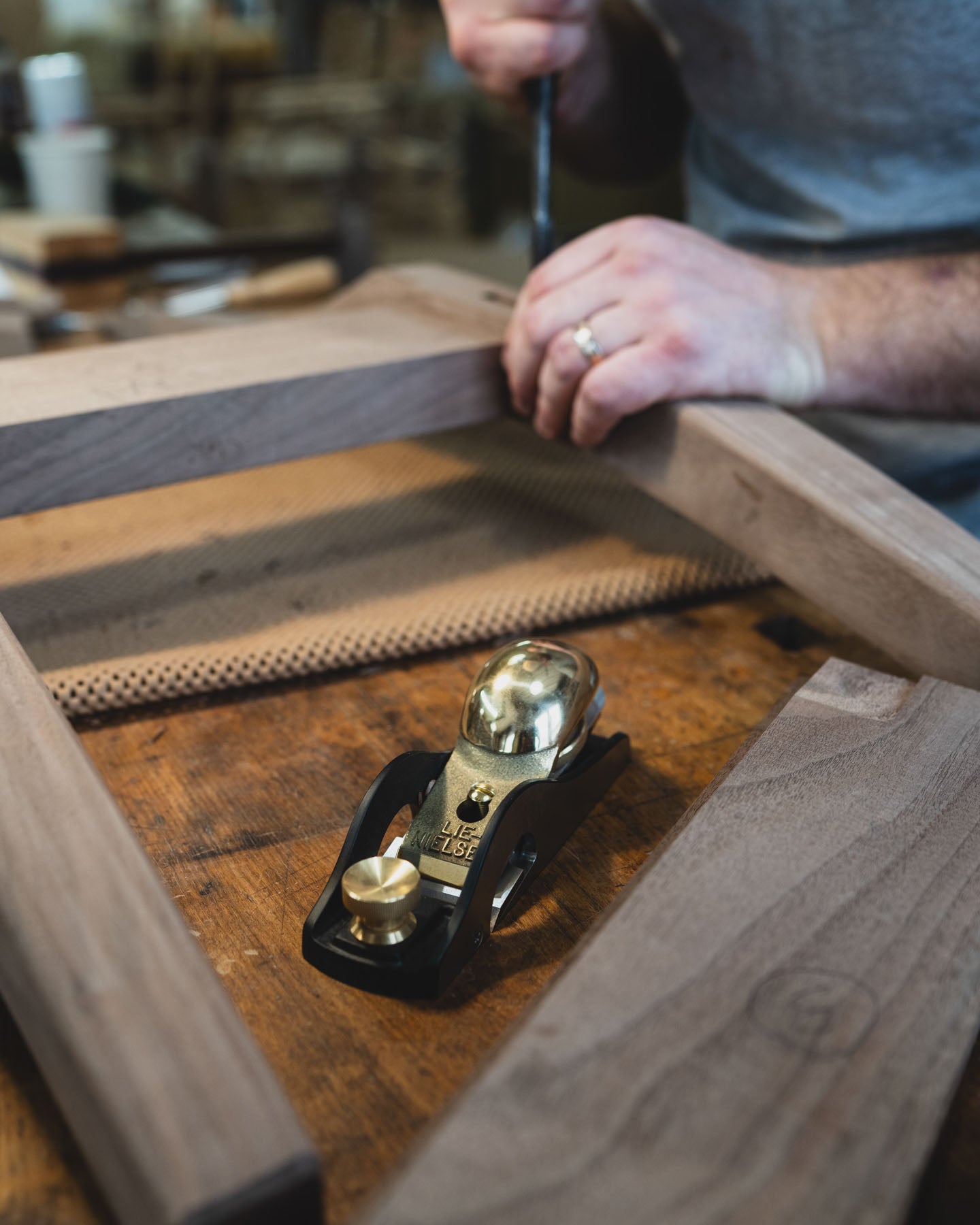
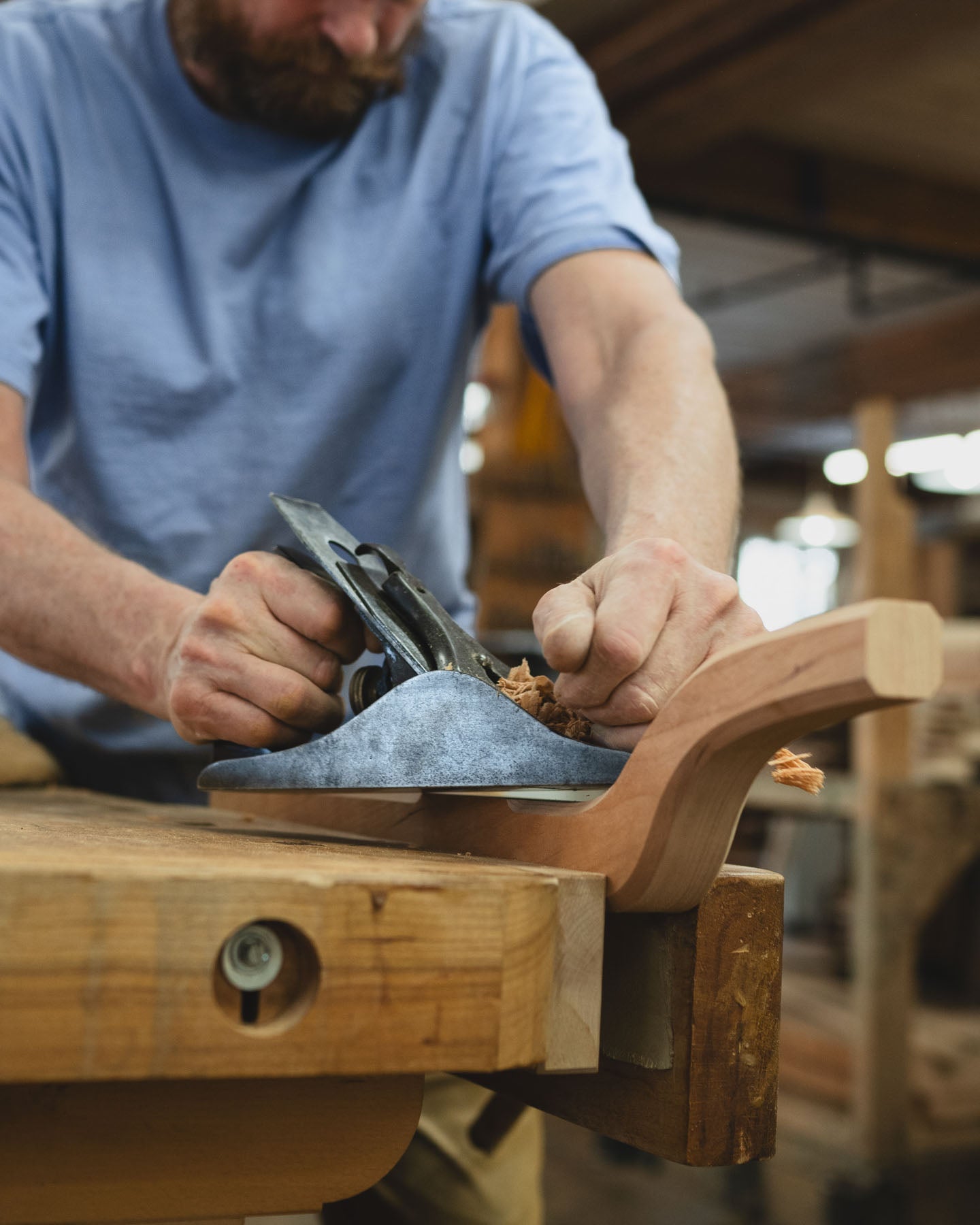
Hand Planing
Many people in our world of furniture making think we are absolutely crazy planing every part by hand. A quick way to go broke. We have thought a lot about it. Our first reason is that we love to do it. The skill of taking a super fine shaving off a piece of wood with a beautiful and precision tool and leave a startlingly smooth surface that requires very little sanding (which is the usual default smoothing process to all manufactured furniture) is an incredibly gratifying and sensual feeling. Everything we do, we try to give the customer real and visible or sensual value from the process. Many of these things are incredibly subtle visually. But each choice like this that we make, adds up to a piece of furniture that has a beautiful personality of its own, and the connoisseur can sense that. I believe that it is this subtle and human handwork that will give our work true value in the future, because it will have a character that the viewer and user can sense and feel. So, hand planing is to smooth the surfaces to a very very fine finish. As a bonus, especially on tabletops, and especially if you stand in a place that the light skims the surface, you can actually see, and feel, the strokes of the handplane working the wood. It all goes back to our philosophy that this handwork, which sometimes isn’t perfect, displays the beauty of our
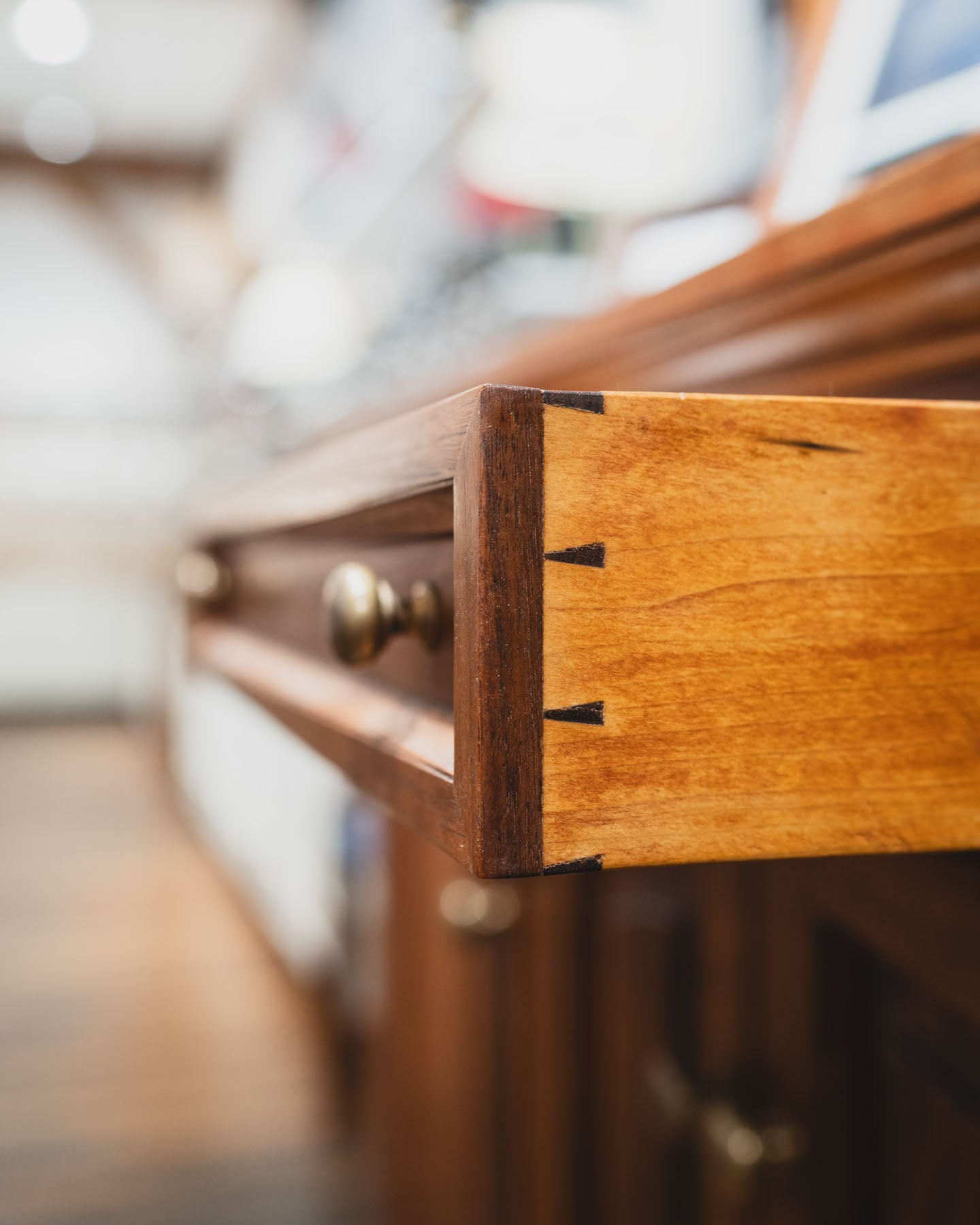
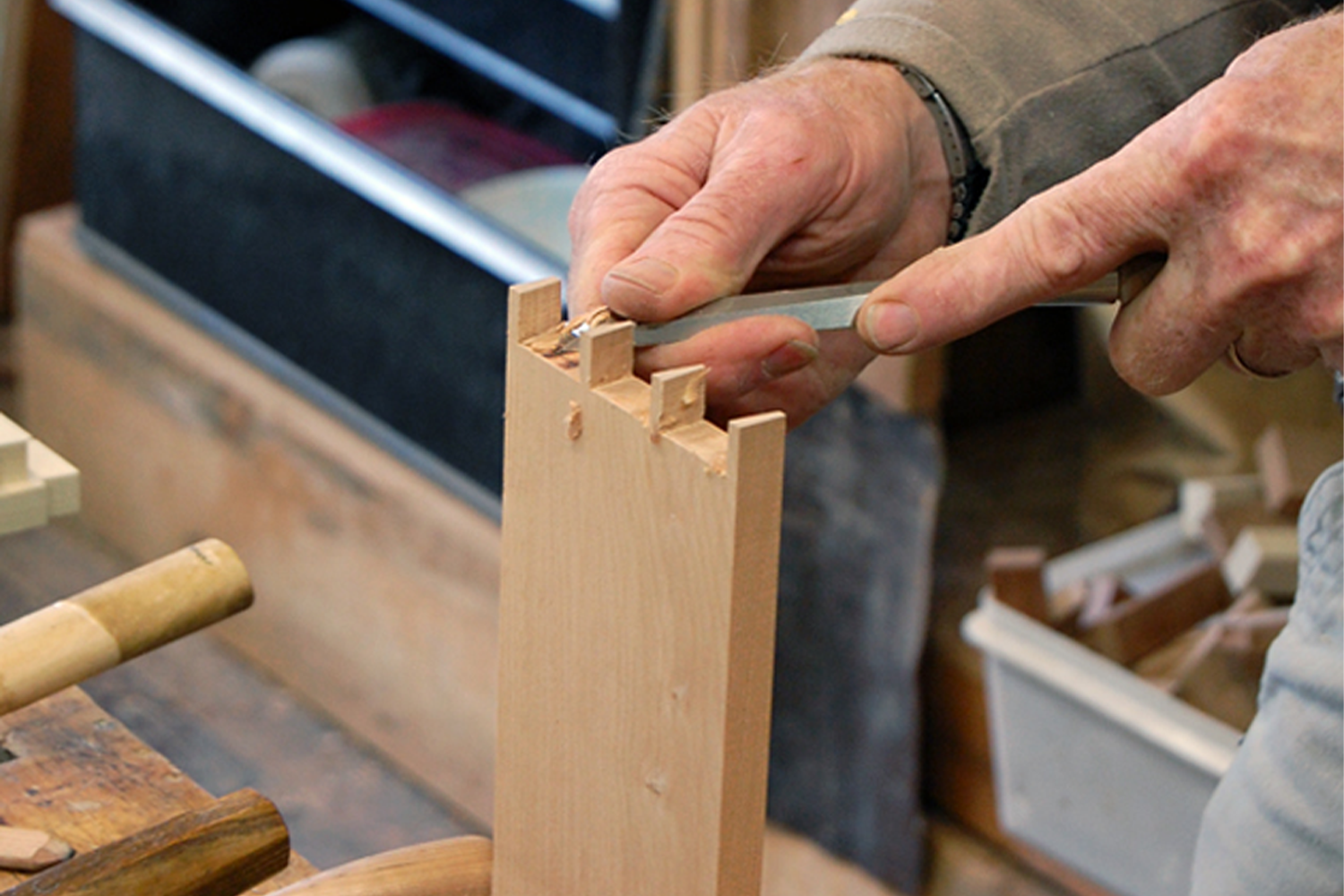
Dovetail Joints
Dovetails are one of the last vestiges of handmade furniture. These days there are fancy machines to be able to cut them, but a machine makes them quite coarsely. Our dovetails, unusually, are cut almost entirely by hand. The reason we have decided to do this is because they are often looked at as important feature and test of the best handmade furniture. But also because we are able to achieve a much more refined looking dovetail. I was always told that in traditional English furniture from 200 years ago, the dovetails were meant to be discreet and almost invisible. But then they became exaggerated as people tried to prove that their furniture really was handmade. I was also told recently that European dovetails are at a finer angle (7 degrees, versus American dovetails which were 14 degrees angle). What you really need to know about dovetails is that they are a very clever “device” or joint, with which to join two pieces of wood at an angle. In the old days, there were a lot more per drawer, (labor was cheap and wood was the expensive part). We don’t do so many per drawer, but they are still a very strong joint. They are a very time-consuming details, but we think they are exceptionally beautiful.
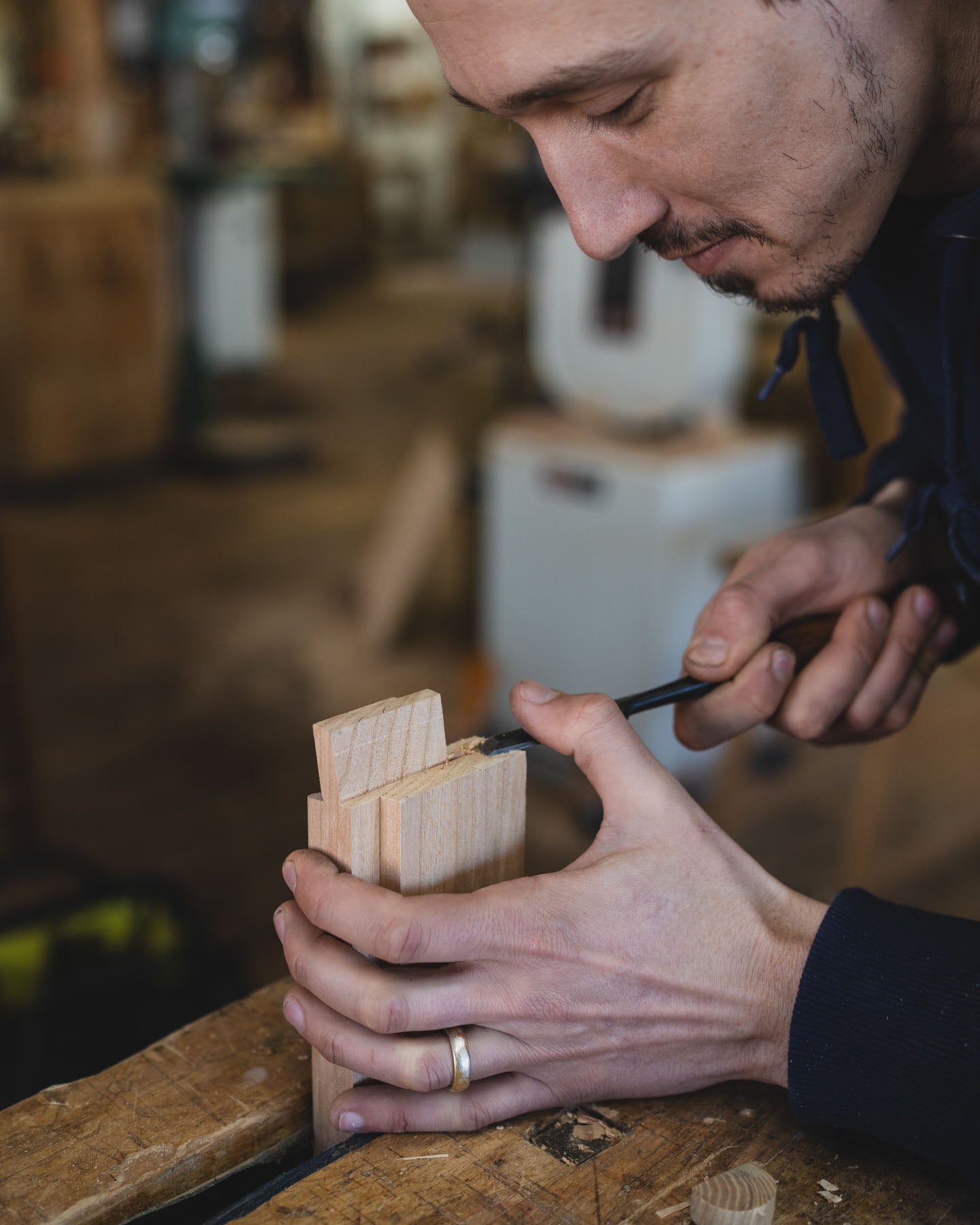
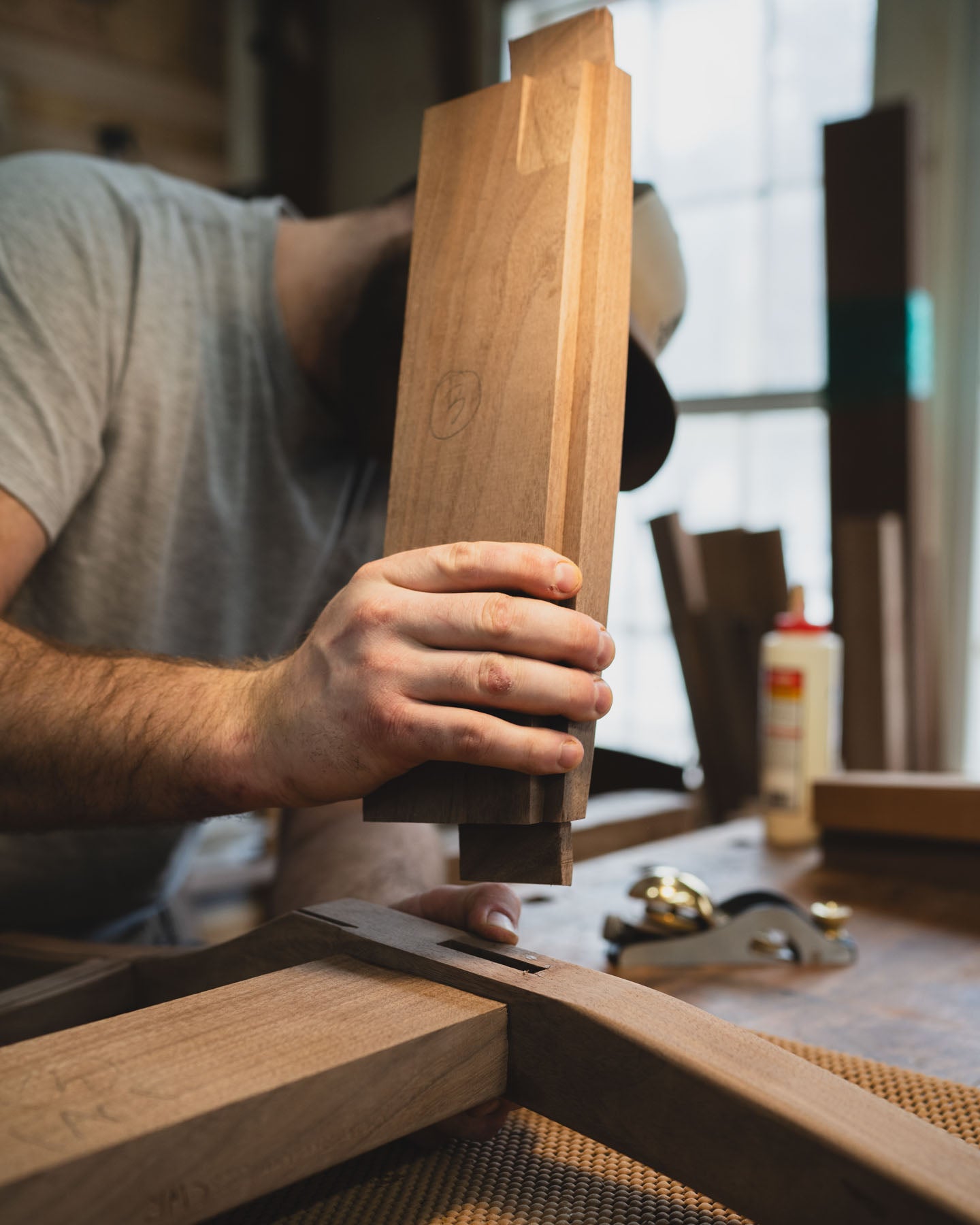
Mortise & Tenon Joinery
To put it bluntly, this is the most secure way of joining two pieces of wood. It involves an elongated square (the Tenon) that has been shaped onto the end of a larger piece of wood, which is then inserted into a matching square hole (mortice) in the other piece of wood. It is held in place by glue, and sometimes a wooden pin through both parts to make sure it never comes apart. This form of joinery has very often been replaced by more modern techniques, such as biscuits and dowels and a reliance on strong modern glues, which are generally a cheaper way to join pieces of wood. Having said that, traditional Post and Beam house frames are very popular these days and are held together by many mortice and tenon joints, as well as a wide variety of other traditional joints. The mortice and tenon is an exceptionally strong because the tenon is an integral part of one of the pieces of wood. This integrity is part of the attraction, along with the traditional aspect of the technique. Our mill is made from a mortice and tenon frame, and part of the attraction is seeing the huge members and how they are joined together. In the old days, (before I was born), these joints were cut using morticing chisels and tenon saws. We can still do that, but nowadays we use a tenoning machine and a morticing machine. It is still quite old-fashioned and keeps the integrity and accuracy of the construction.
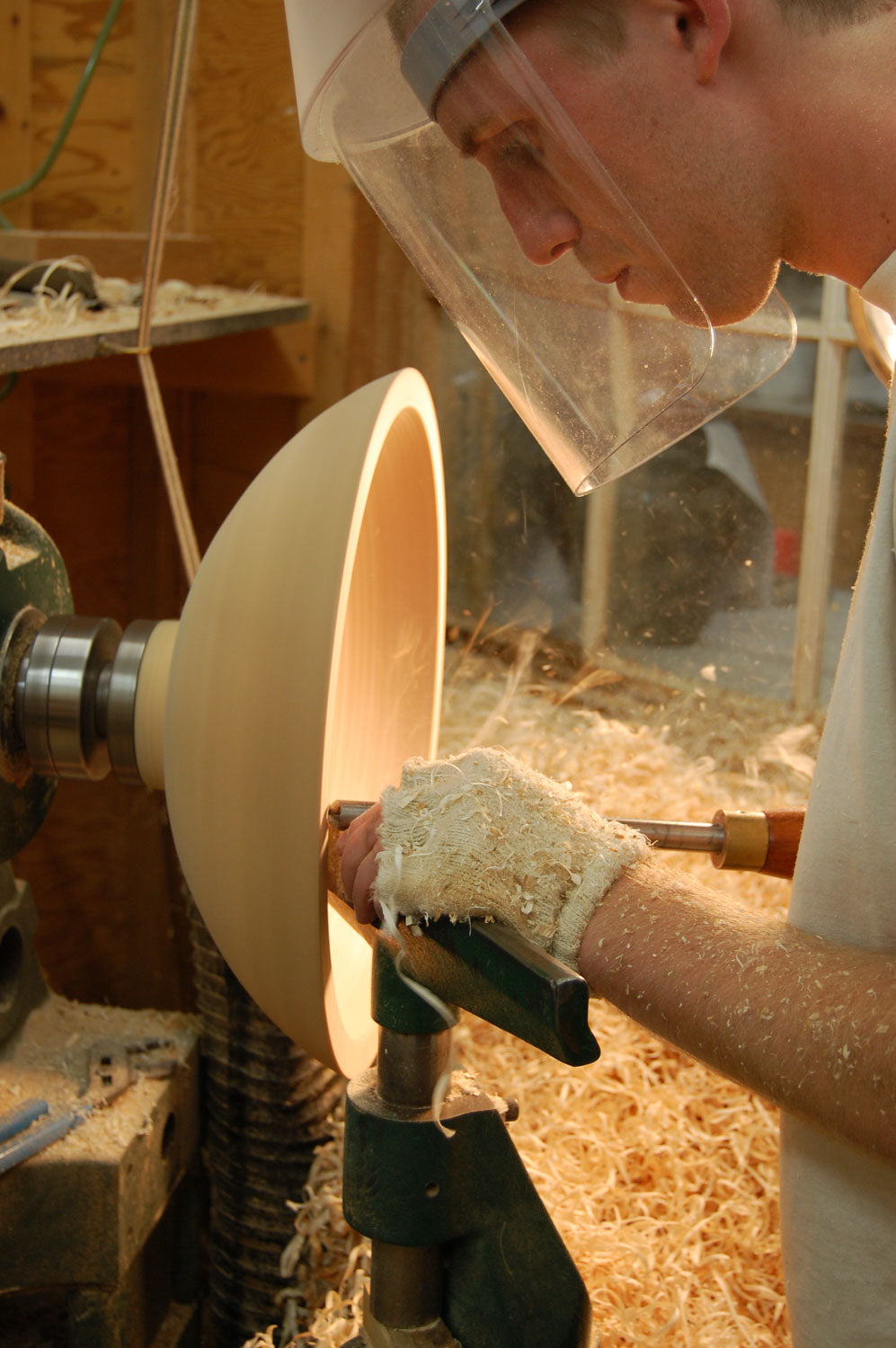
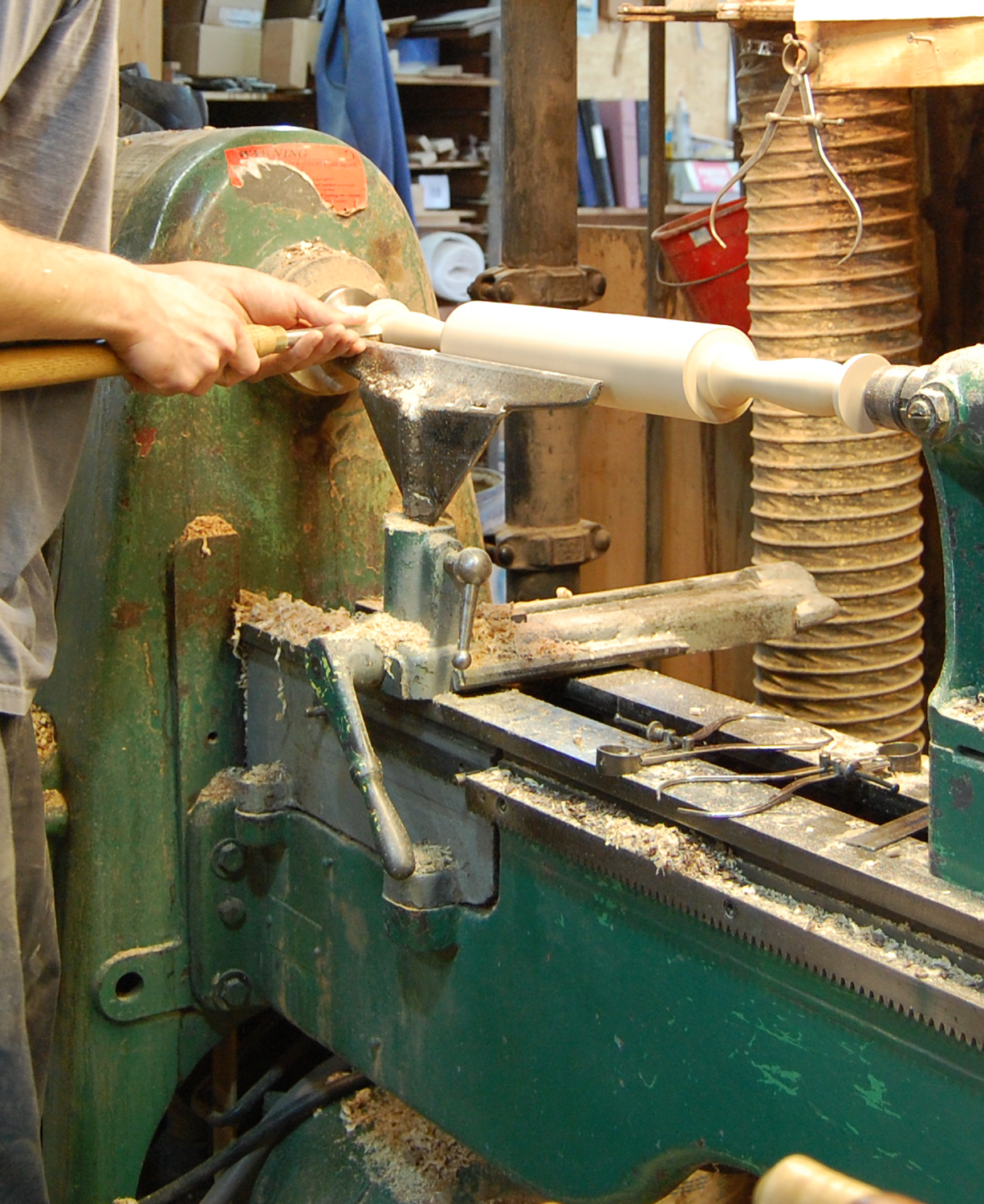
Turning
Turning on the lathe, where the wood is held on a spinning motor and shaped with a sharp tool, is really the only way to make a round shape. Whether it is a column, as in our Josh’s Tables or wooden lamps, or hollowed out, like our green turned bowls, hand turning creates a graceful, sculpted form. All of our knobs are hand turned, as well! Details make the piece!
Details of Design
Charles Shackleton Furniture's hand carved details make the pieces truly special
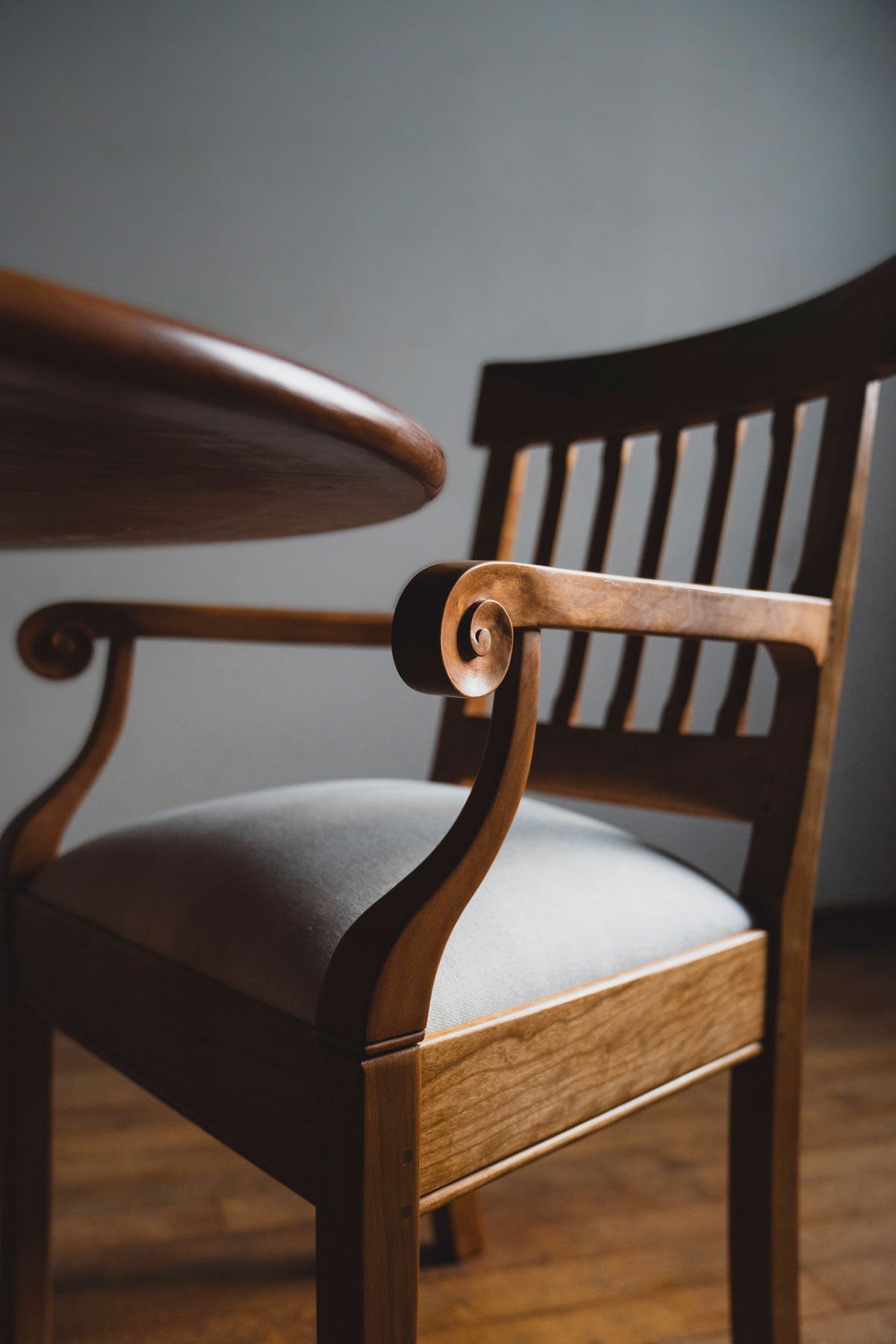
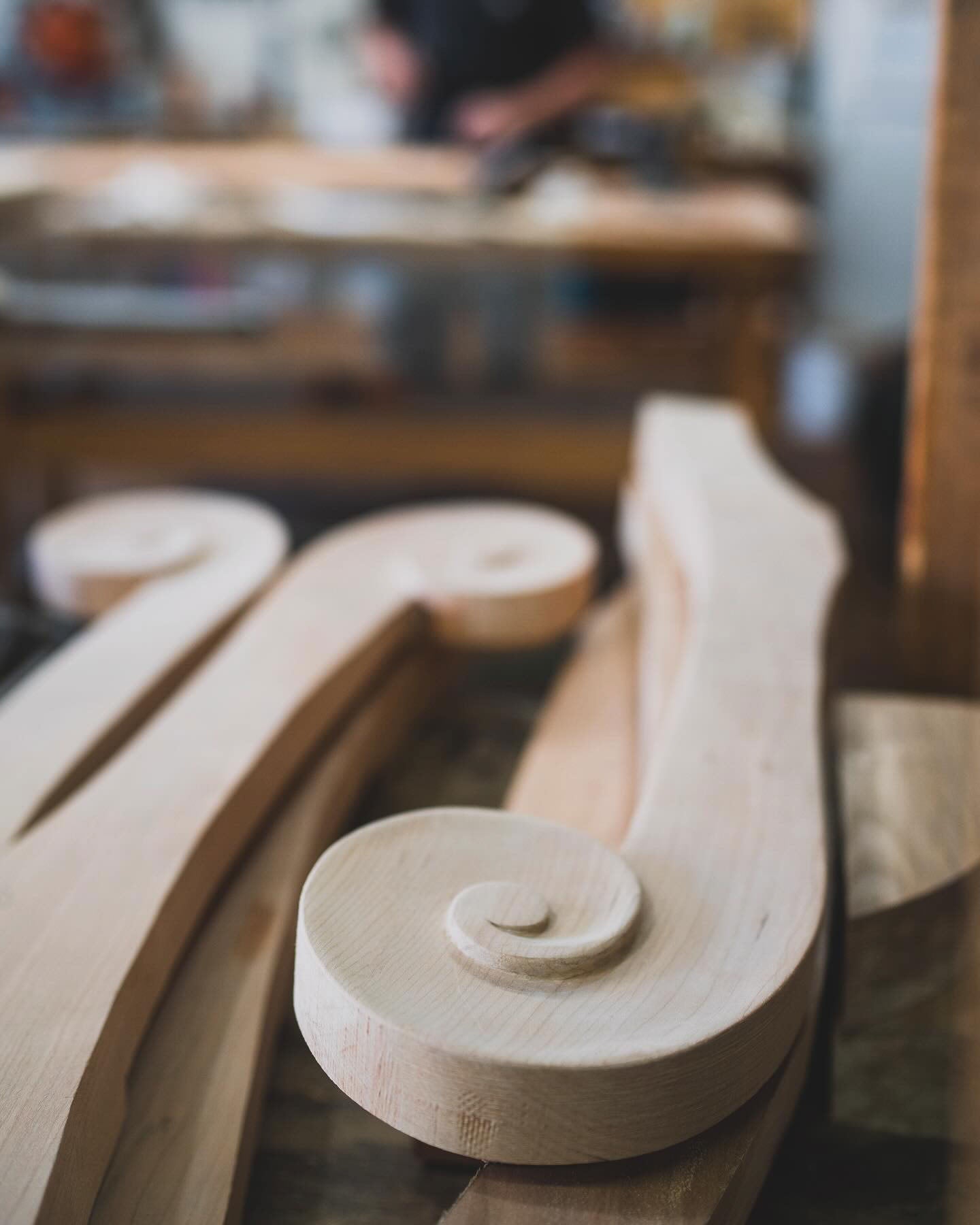
The Curl
There was a wonderful older gentleman friend and mentor, Ned Coffin, who came into my rather dark basement shop shortly after I had begun to make furniture in 1986 to see what I was up to, and I imagine, to give me some encouragement. His family had been in a large furniture manufacturing business, and he, like many of my best mentors, were very skeptical of this choice of profession. They worried especially for Miranda and our joint (financial) fate. It is amazing how you remember, far back, one comment from a book or a person, that sticks with you. He said, “a great piece of furniture should make you smile”. Such a wonderful and important piece of advice. I think the curl does just that, and it has been an iconic signature of much of our work. What is more, it shows off our great hand work skills, and the character, (previously described) that goes with it. I based the curl on the Nautilus shell and the Fibonacci sequence, (which you will have to look up on your machine). It is magical. Another important word!
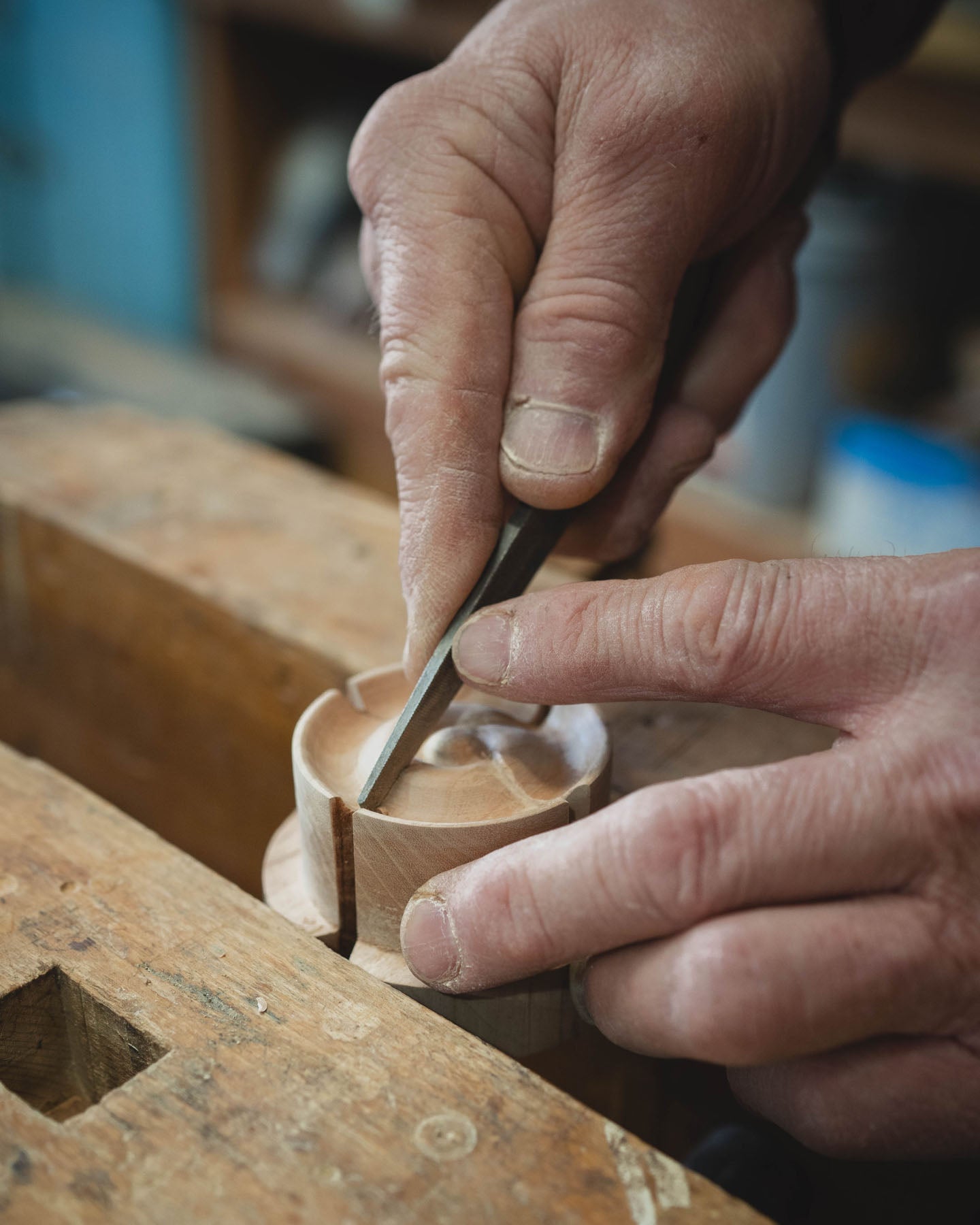
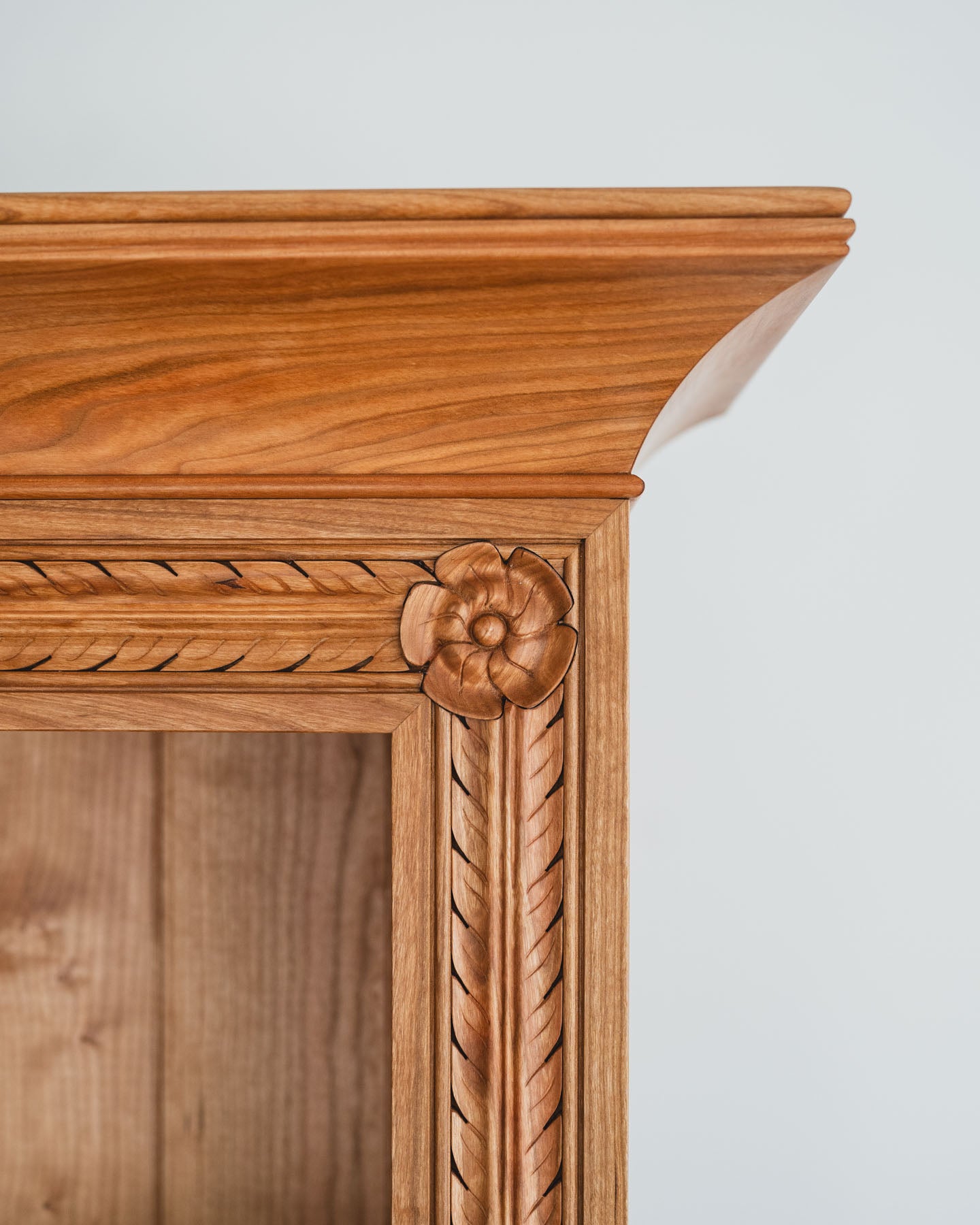
Juliet's Rosettes and Branch
Some people love decoration, some people like plain and simple. Some consider it the difference between traditional and modern. I think that’s just a point of view. I guess I am between the two. What I will tell you is that there are many, many of our customers who LOVE this decoration. It is romantic in title and looks. We named it after our good friend, Juliet Grant-Suttie, who ordered a piece from us, and we wanted to honor her inspiration and kindness. And then there’s Shakespeare. The rose is designed after the “wild Irish rose, Rosa rugosa, which has five petals and a nod to my wild Irish childhood. And yes, there is a ton of handwork right there. We turn a blank on the lathe to give the essential rotary features and then carve in the overlapping petals. Sometimes we gold leaf these flowers for an extra glamorous flourish. (add photo). As to the leaves, which our draftsman rudely calls, ‘weeds”, (and that’s kind of stuck -unfortunately). These are no ordinary garden weeds. We mold the basic longitudinal pattern on a molding machine, and then we come along and nip out the spaces between the leaves and then, most importantly, carve the central vein, with a “V” shaped chisel. If you look, this little carved ‘V” makes the difference between an amateurish leaf and one that is truly alive.
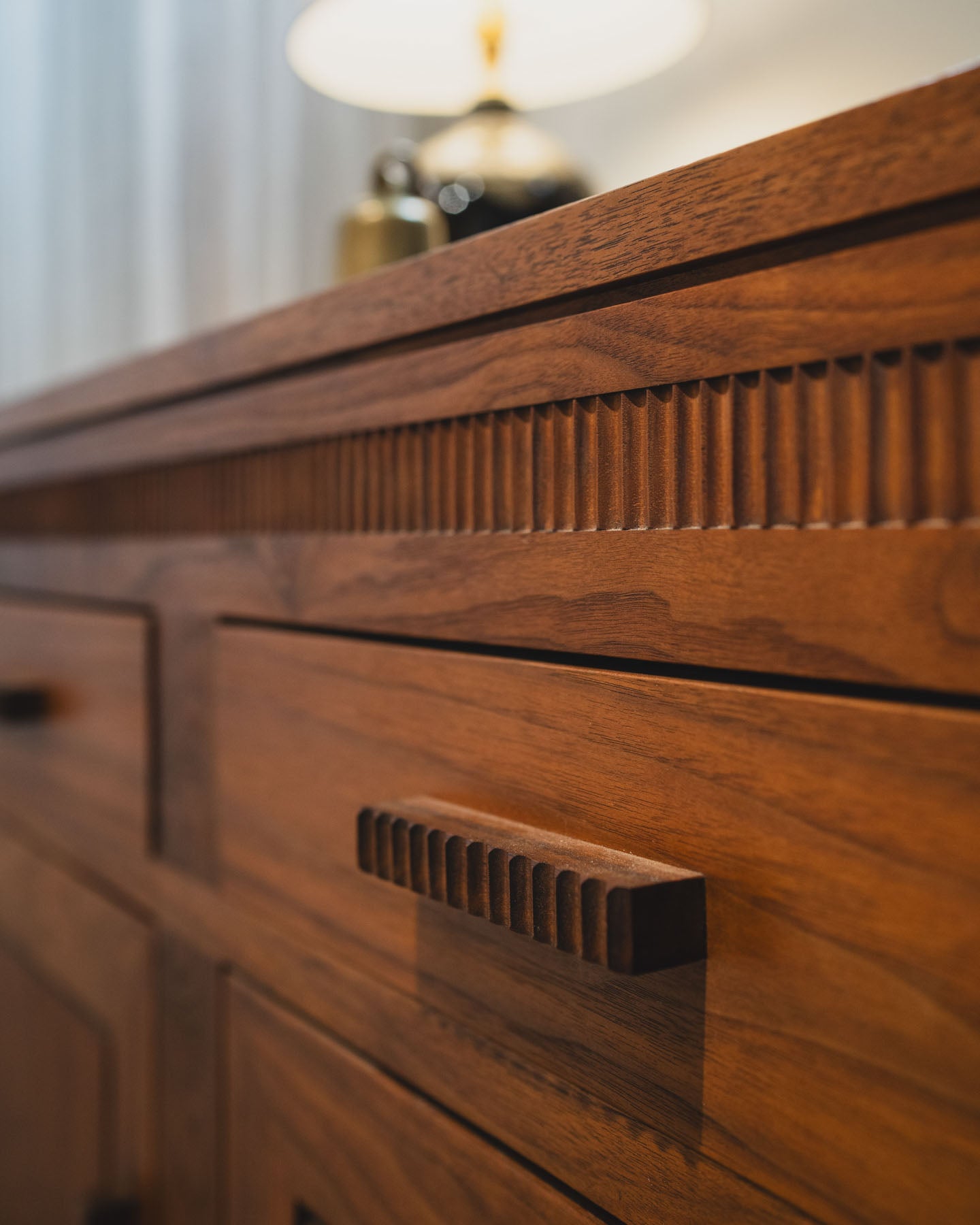
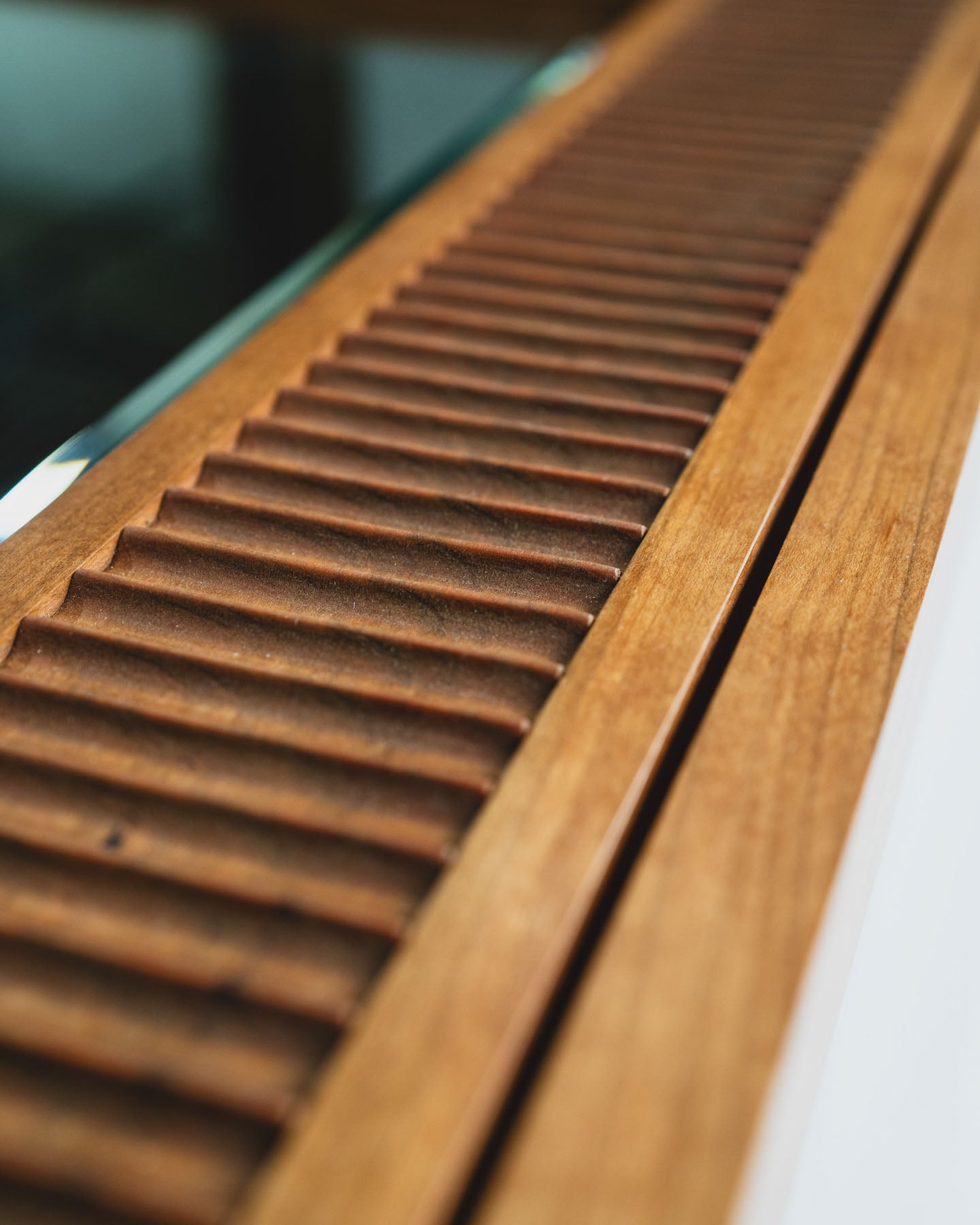
Modern Classic Fluting
I always describe the style of our furniture as “contemporary interpretations of classic furniture”. I find it hard to make very super, super stark and simple modern furniture. It is actually hard, and I’m the sort of person that likes at least a little bit of attention. If you make really, really simple furniture, it is sometimes hard to show off our core philosophy of handwork being important. The joke is that when you make very simple furniture very well, everything is visible, and the joints have to be absolutely perfect. (no classic moldings to cover up bad joinery) Hence the fluting that we apply to our more modern, Modern Classic Collection. By the way, I try to design and furniture that I love, and it is not just for the attention. I think this fluting suggests a rhythm and it’s a catchy rhythm for the eye.
